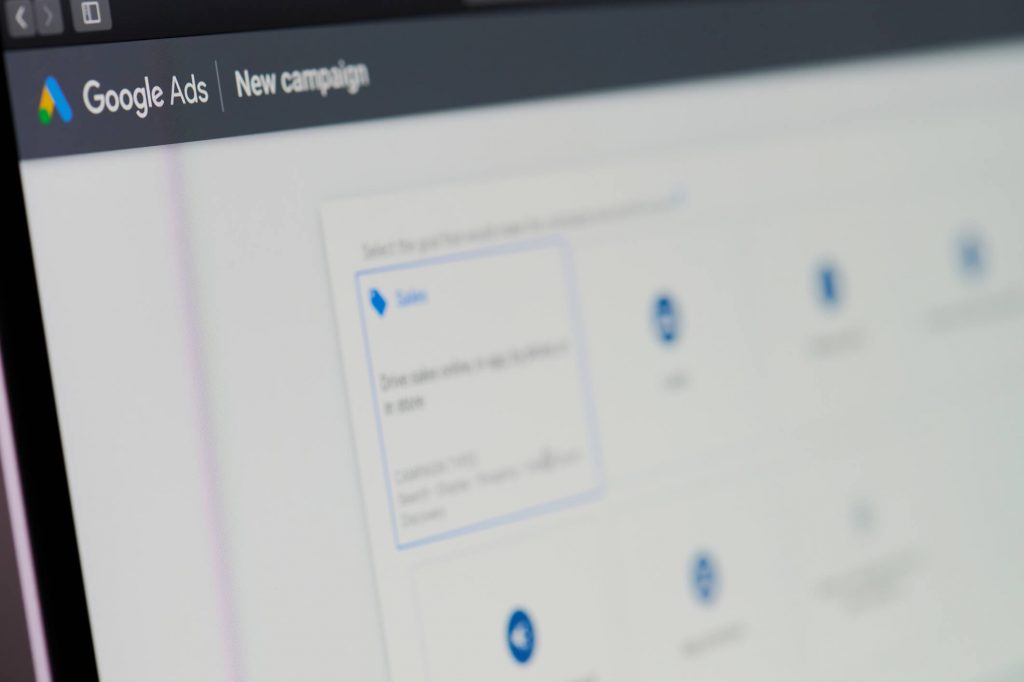Mel is our Partner Strategy & Delivery Manager and also a CIM Chartered Marketer, a testament to her commitment to excellence in the field. But Mel’s contributions don’t stop at the office door. Beyond her professional endeavours, she leads an active life as a qualified run leader and dedicated volunteer. Her experience in these roles has streamlined her leadership and teamwork skills, making her an invaluable asset when it comes to collaborating on projects and ensuring their success. Her sharp insights, strategic thinking, and knowledge have made her a backbone in our team’s ability to drive results for clients in this industry. Mel will make sure that we can approach marketing challenges from all angles and deliver outstanding results for our clients.
Posted on 05/09/2022 by Melanie Comerford
What is Behavioural Marketing?
Behavioural marketing is a type of marketing strategy that focuses on the actions that a user takes when visiting your platforms, be it your website, email campaigns, ads or social media pages. By analysing the unique behaviour of your users, you are then able to paint a more complete picture of them and what they are really searching for when interacting with your brand.
Have you ever searched for something on the web, and then received an advert for something related to it a couple of days later? No, this isn’t a coincidence, it’s an example of behavioural marketing in action.
How Does Behavioural Marketing Work?
Behavioural marketing is especially valuable as it allows you to target very specific groups of people and turn them into leads. In a world that is full of ads, popups and ways to generate customers, it isn’t always the best idea to run a campaign in the hope that someone might interact with it.
Instead, behavioural marketing will take into account other aspects of the user’s behaviour, such as their browsing and search history, IP address and cookies. Information on what they are looking at, how long they spent looking at a product or whether they added anything to their basket is all collected and sent to the ad server. This information is then used to generate a clearer picture of who your customer is and what they are really looking for.

Behavioural Marketing vs Contextual Marketing
Where behavioural marketing targets specific users based on their online behaviour, contextual marketing will display an ad alongside content that is deemed to be relevant. An excellent example of this is if you were buying a new guitar, you may see ads at the side of your screen for guitar accessories or music lessons. Machine learning is used to ensure that the ad is relevant to the on-page content to maximise the conversion rate.
Both behavioural marketing and contextual marketing are valuable forms of advertising as they are both used to put related ads in front of users at the right time. What’s more, they are both highly dynamic and will become better equipped at finding the right customers as they gather more information. Despite these similarities and the end goal being the same, behavioural and contextual marketing are very different in how they choose the right place for an ad. Let’s explore this more:
The key difference between the two is that behavioural marketing will take into account the past behaviour of the user and place an ad in the most effective place. Contextual marketing doesn’t do this and instead places an ad in the location where it thinks the customers might be based on the content they are currently looking at. Both of these marketing methods have pros and cons, although it is often most effective to use a mixture of the two to generate the most conversions.
The Benefits of Utilising Behavioural Marketing
Behavioural marketing holds a number of different benefits, both for the brand and for the consumer. Firstly, it improves user engagement with your ads by selecting relevant content for specific audience members. By harnessing the power of data, you are able to better understand your customers and their needs, making it easier for you to fulfil them. Personalised ads are far more likely to progress consumers through their buyer’s journey than generic, disruptive ads. This helps to mitigate wasting time, money and resources on general campaigns that aren’t giving you the return on investment you need.

For the consumer, ad targeting greatly improves their experience with adverts. No one wants to see ads for products and services they don’t need – after all, if you were shopping for a new bike, why would you want to see ads for beauty products? By putting the right products in front of people at the right time, they are far more likely to find something that appeals to them. By adopting a behavioural marketing strategy, you will help to improve the efficiency of your consumers. They are far more likely to find products or services that they otherwise may not have been aware of, improving your opportunity to secure new conversions.
How to Create Your Behavioural Marketing Strategy
Creating a behavioural marketing strategy doesn’t have to be complicated. Generally, there are three main parts to the process; data collection and analysis, audience segmentation and then the application of your results. By understanding these three key areas you can easily design a successful behavioural marketing strategy that will bring in high-quality leads to your brand.
Let’s explore these steps in more detail.
Considerations to Make When Creating Your Behavioural Marketing Strategy
Before we go any further, let’s look at a few key considerations to make when designing your behavioural marketing strategy. When collecting your user’s data, make sure you let them know how you are using it. The process of monitoring a person’s buying habits and behaviour can be quite uncomfortable to some, so make sure to let them know what your intentions are. It’s also worth mentioning that just because you have a wealth of data at your fingertips, it doesn’t mean you should totally disregard the old methods of data collection. Surveys and user feedback are still great ways of better understanding your audience.
Another important thing to consider is the size of your audience segmentation groups – they should be the right size to maximise the success of your campaigns. Groups that are too big and vague risk not being able to target specific sets of users. Likewise, by segmenting your audience into groups that are too small, your ads will not reach enough people to be successful. Find the right balance and reap the rewards.
Finally, like any marketing campaign, it’s absolutely crucial that you analyse the results. If your behavioural marketing campaign has been unsuccessful, there may be variables that you need to change to get a better return on your investment.
Data Collection & Analysis
Data collection is the key to a successful behavioural marketing campaign – the more information you gather, the more precise your ads will be. These days, it’s easier than ever to collect data and we no longer have to rely on long-winded data collection methods that cost both time and money. Data is now collected from various channels that track a user’s unique behaviour, including websites, social media, search history, emails and mobile apps.

Audience Segmentation
The second step in your behavioural marketing strategy is to begin to sort out which users will go in which group – a process often referred to as audience segmentation. Users will be divided by their behavioural patterns and demographics, allowing you to target specific groups of people with ease. For example, you may want to place an ad for all males who have looked at motor-related content aged between 18-25. Your analysis will be able to sift out all users who do not match these exact criteria, ensuring that your ads or emails are being seen by people most likely to convert. By using a tool such as Google Analytics, you can enhance your ad targeting by focusing on specific groups within your user base.
Some channels such as Facebook Ads or Linkedin Ads allow you to choose which audience you want to send ads to, meaning a lot of the lengthy work is done for you. All you have to do is pick the behavioural patterns that you want to target and the algorithm will segment your audience accordingly.
However, it’s important to note that you shouldn’t let the algorithm do all of the work for you. These machine-learning tools are designed to make ad planning and implementation easier, but they are also designed to make the ad network profit too. Believe it or not, sometimes algorithms can get it wrong, but instead of identifying the issue and correcting it, they will continue to haemorrhage through your marketing budget. If you’re planning on using algorithmic ad tools, we recommend checking in and monitoring the results of your campaigns regularly to ensure you get the most out of your investment.
Applying Your Data
The final piece of the puzzle – implementing your data into your campaigns. In this stage, you’ll need to use the data you’ve found and create your truly tailored content, whether that be via Facebook Ads, Email or Google Search Ad. The channel you use is completely down to you, although it’s important to understand your audience and where they search for what you’re offering to maximise success. We’ve listed some of the main channels below:
Email Retargeting Campaigns
Another popular way to implement behavioural marketing is through marketing retargeting. Essentially, this is a process that focuses on users who have in some way interacted with your brand previously. An example of this would be sending a user an email after they had added something to their basket but hadn’t carried out the purchase. The email may say something along the lines of ‘are you still interested’ to attempt to draw the user back in and convert. You may also want to send an email to a group of people that hadn’t opened an email from you in over three months. This could be an email offering some kind of bonus with the aim of converting them back into an engaged customer.
The simple fact is that people are busy and don’t always have the time to purchase a product right away. Or, many people shop around to try and find the best deal for them. By implementing marketing retargeting, you are reminding your customers about the services and products that you offer.
Customised Messaging (Chatbots)
Chatbots are a great way to communicate directly with your customers and determine what they are looking for from your brand. By gathering information about what your users want, you can tailor the content that you send to them in future. Not only this, but it helps your customers find what they want on your channel and ensures a smoother buyer’s journey for them.
Product Recommendations & Suggestions
Another form of behavioural targeting is product recommendations and suggestions. This simple marketing technique aims to personalise a customer’s experience by showing them products that they are likely to enjoy. The information is again based on their previous purchases, browsing behaviour and demographics.
Product recommendations are especially beneficial for eCommerce websites that have large catalogues where stock can be easily missed. By suggesting products to your customers at the right time in their buyer’s journey, you are providing a strategy that makes sure they aren’t missing anything on your website.
PPC Services at Loop Digital
We offer a range of Paid Media services here at Loop Digital, whether that be PPC via Google Ads or Social Media Advertising. We’re experts in getting your business the support it needs to start reaping the rewards of successful ad campaigns.
If you’re interested in finding out more about our PPC services, contact a member of our team today to discuss your business’s requirements.
Looking for your next opportunity?
Digital marketing careers
We’re always on the lookout for talented individuals to join our ever growing team. If you think you’d be a great match for Loop Digital, we’d love to hear from you.

Join 300+ business owners getting weekly growth strategies - subscribe now.
"*" indicates required fields






